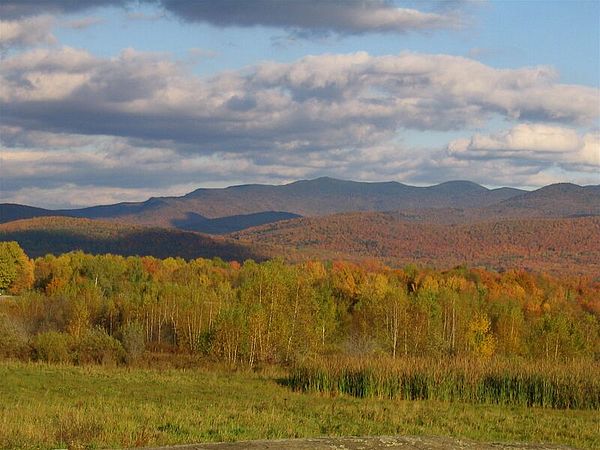In 2020 the Vermont Legislature passed the Global Warming Solutions Act. This legislation set binding emissions reductions targets for the state to meet over the coming decades (reducing greenhouse gas emission to 26% below 2005 levels by 2025, 40% below 1990 levels by 2030, and 80% below by 2050). The Act also directed the newly formed Vermont Climate Council to draft a plan to meet these reduction targets, as well as to consider opportunities for conservation through long-term carbon sequestration and identify actions Vermonters can take to better prepare for the more extreme impacts we’ll face, building adaptation and resiliency into both our natural and built environments.
Over the past year the Council—and its various subcommittees—have worked tirelessly to meet this herculean challenge on an almost impossible timeline. They had less than one year to draft the plan, working across multiple sectors and taking input from across our Vermont community, and on December 2nd the Council is poised to adopt it. The Agriculture and Ecosystem Subcommittee (on which I had the opportunity to serve) focused primarily on the role that our natural and working lands will play, drafting strategies and actions for inclusion in the final plan. Here’s a few highlights from the Committee’s work:
- Invest in strategic conservation in order to increase the pace of permanent conservation towards 30x30 targets with Vermont Conservation Design acting as the guiding plan for prioritization of efforts
- Per the formula in statute, fully fund the Vermont Housing & Conservation Board (VHCB); including $3M for the Farm & Forest Viability Program and increase annual VHCB funding above the statutory amount by 15%, targeting those funds for implementation of conservation actions recommended in CAP, especially those related to forests.
- Promote statewide landscape connectivity and forest blocks conservation planning through robust support of the Staying Connective Initiative and use of Vermont Conservation Design and TNC’s Resilient and Connected Landscape in state program prioritization frameworks.
- Through permanent conservation coupled with both active and passive restoration efforts on both public and private lands, allow approximately 9% of Vermont's forest to become (or be maintained as) old forest, specifically targeting 15% of the matrix forest within the highest priority forest blocks identified in Vermont Conservation Design to achieve this condition.
- Promote and incentivize Climate Adaptation forest management practices, and Develop and implement programs which incentivize management practices which maintain or increase forest carbon storage
- Create or adopt existing certification standards where management activities account for principles of Improved Forest Management towards increased carbon storage, as well as maintaining and creating resiliency (as described in existing state guidance such as Maintaining and Creating Resilient Forests in Vermont: Adapting Forests to Climate Change, VTFPR 2015, or as modeled in existing programs such as the American Forest Foundation’s Family Forest Carbon Program)
- Leverage market-based solutions, such as existing or new regional carbon market opportunities, to incentivize forest management practices which sequester and store greater amounts of carbon in our forests
- Work to develop a new Vermont based or regional (modeled on RGGI) Carbon Credit marketplace with necessary research and standards which address concerns around the efficacy of baseline establishment, accounting for additionality, the potential for leakage, and address equity for the diversity of wood lot owners across the state
- Incentivize the in-state purchase of carbon credits developed by Vermont-based or regional carbon projects through a system which addresses concerns of accounting (i.e., additionality and leakage)
- Promote and incentivize compact settlement and reduce forest fragmentation
- Provide enhanced technical assistance and support to municipalities and regions, including outreach and education for landowners and community members, to develop and implement town plans intended to maintain forest blocks and connecting habitat as authorized by Act 171, and effective zoning and subdivision bylaws to maintain forest blocks and connecting habitat.
- Implement a Payment for Ecosystem Services (PES) program for natural and working lands
- Plan and regulate for climate resilience and adaptation
- Establish "climate resilience zones" informed by existing data, bolstered with new research/science, to identify locations that have high resilience potential for both the natural and built environments and use to inform land use development and regulations
- Per the formula in statute, fully fund Regional Planning Commissions (RPCs) to ensure sufficient capacity necessary to address climate change in regional and municipal plans.
- Develop, expand, and sustain local markets specifically for food, agricultural, and forest products in ways that ensure food sovereignty and security and provide for all Vermont’s peoples
- Develop a strategic plan for the forest economy, modeled on the Farm-to-Plate strategic plan but improved to better incorporate impacted stakeholders and principles of equity, as well as examining our current language and approach to forest management
- Support research and development efforts, and expansion of new markets and opportunities for local wood products processing and manufacturing in Vermont.
- Develop alternative markets for low-grade wood, focusing on cellulose insulation, bioplastic composites, or biofuels.
The Climate Action Plan will serve as a guide for the Vermont Legislature in setting policy that supports climate change solutions for Vermonters and Vermont's landscape, but it’s much more than that. It’s our collective plan, and many of the recommendations and actions described will need to be taken up by our partners in the non-profit world, as well as by individual Vermonters acting as stewards of our shared resource. December 2nd is right around the corner, so watch this space as the final Climate Action Plan drops and we all, collectively, look towards the work ahead.
